Here are some basic fishing knots and how to tie them:
The Clinch Knot and The Improved Clinch Knot
Is very easy to tie, which is the main reason it's so popular for connecting mono-filament to terminal tackle. It's most effective on lines under 20-pound test.
Clinch Knot Video
Improved Clinch Knot Video
Uni Knot
Strong, reliable, and easy to tie, the Uni-Knot is an excellent knot for securing line to terminal tackle. It's also the foundation of the entire Uni-Knot system. Note that the Uni-Knot can be left as a loop or tightened down so it's snug to the hook eye.
Uni-Knot Video
Double Uni Knot
Used to join tow fishing line together like braid and fluorocarbon
Double Uni-Knot Video
The Palomar Knot
The Palomar Knot is easy to tie, exceptionally strong, and very popular with bass fishing pros for tying on jigs and worm hooks. It's somewhat awkward to tie when using lures with treble hooks, but it is the recommended knot for braided lines.
Palomar Knot Video
Non-Slip Mono-Loop
This is an exceptionally strong loop when tied correctly. But be sure to use the right number of turns (as determined by the line's strength rating--see Step 2), and tighten your knot very carefully.
Non-Slip Mono Loop Knot Video
Rapala Knot
The Rapala Knot is popular method to tie a lure to a line such that it can move freely and unimpeded by the knot. Essentially the same as the Non Slip Mono Loop, the knot has one more step in it's making.
Rapala Knot Video
Trilene Knot
The Trilene knot is an all-purpose connection to be used in joining monofilament to swivels, snaps, hooks and artificial lures. The knot's unique design and ease of tying yield consistently strong, dependable connections while retaining 85-90% of the original line strength. The double wrap of mono through the eyelet provides a protective cushion for added safety.
Trilene knot Video

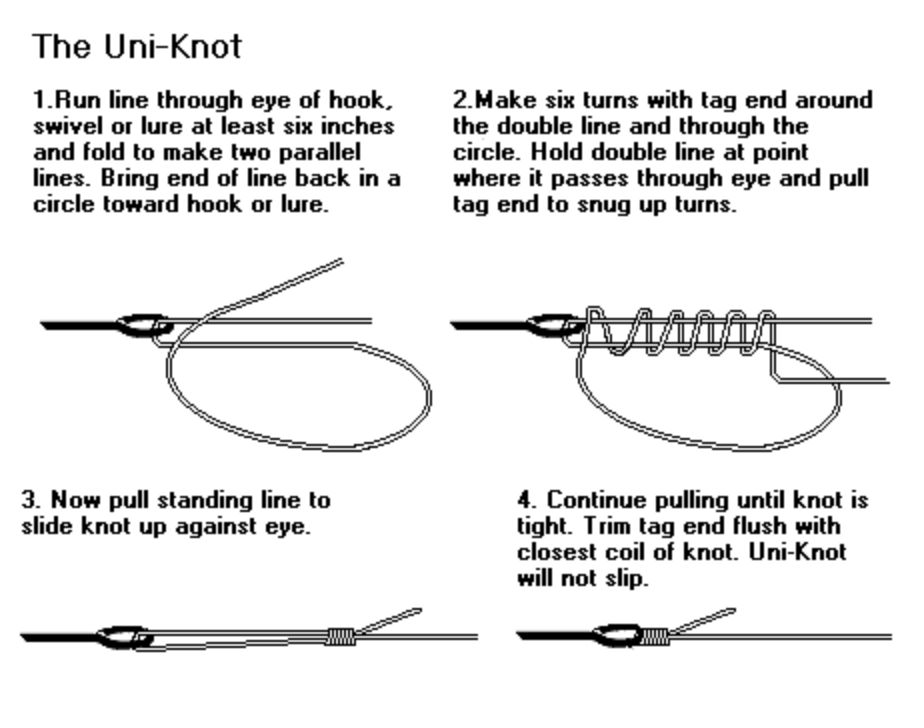
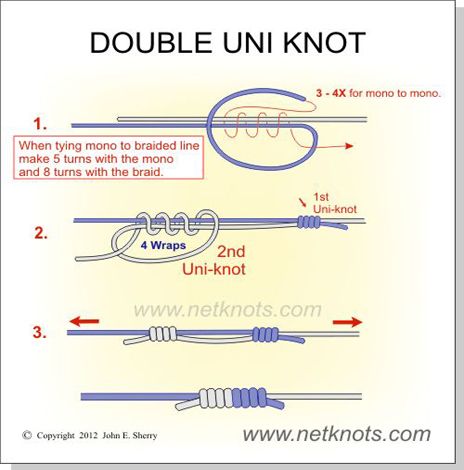
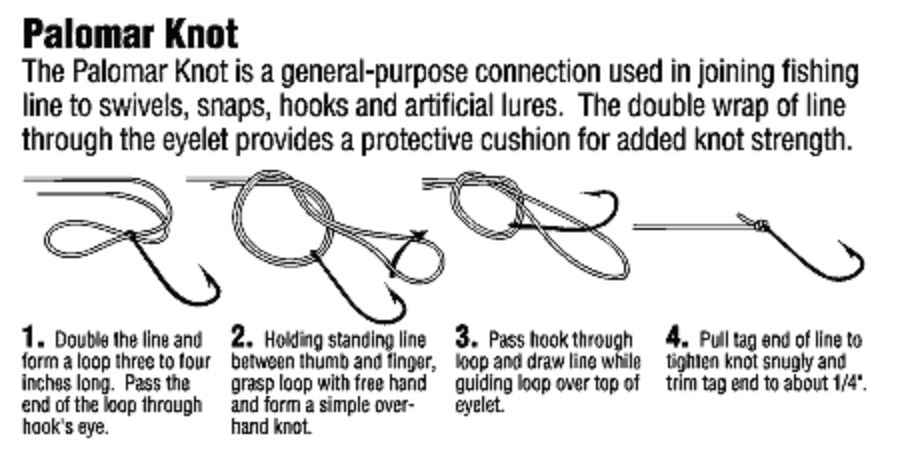
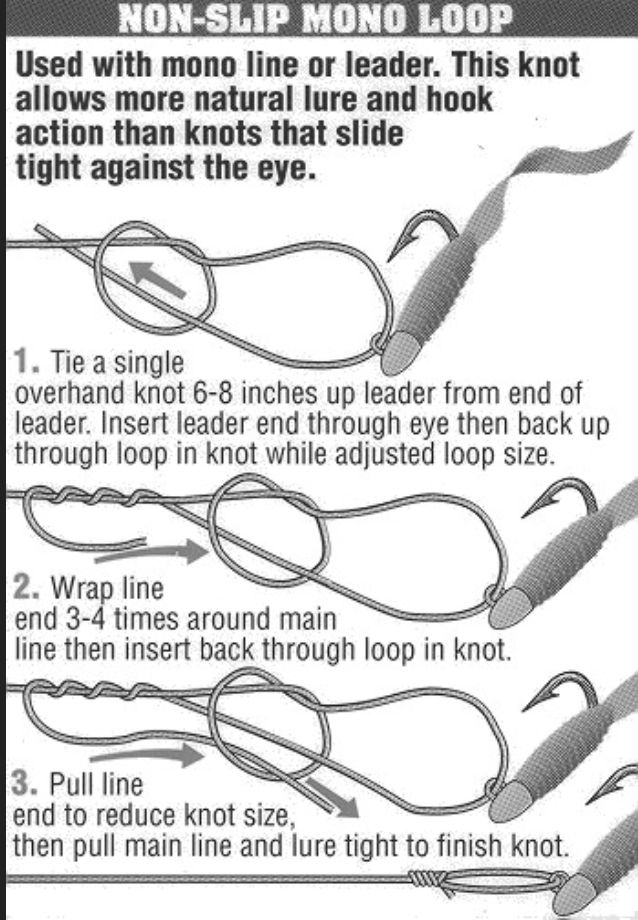
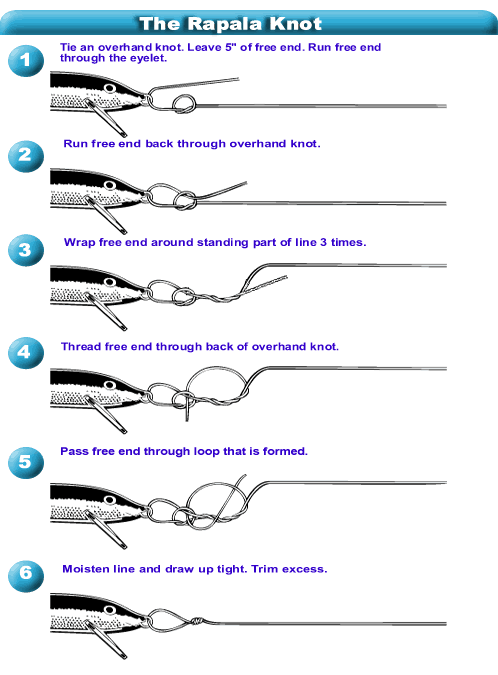

No comments:
Post a Comment